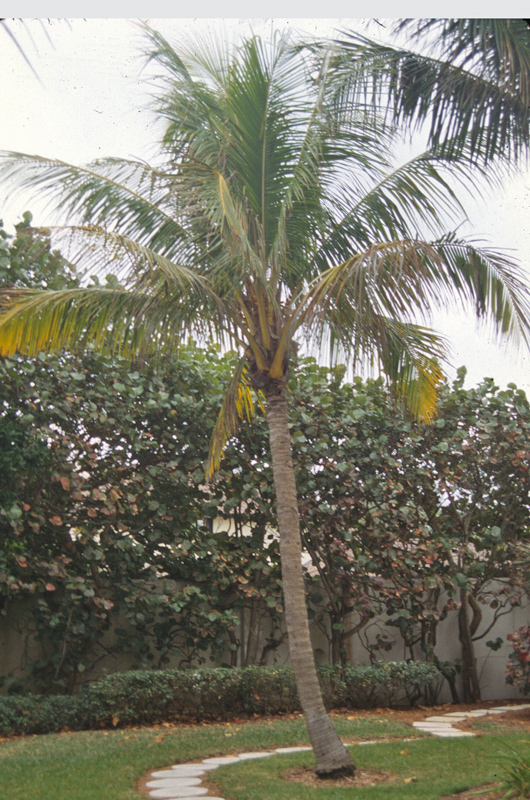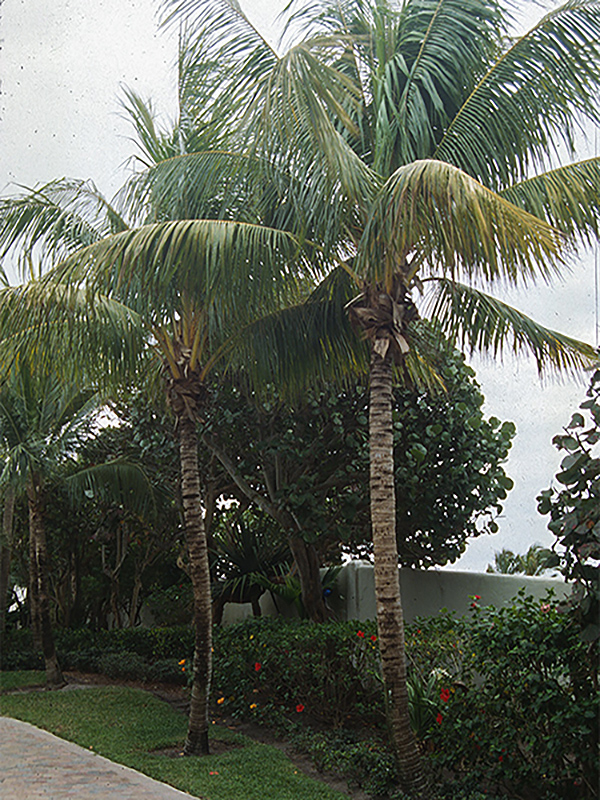
Tropicals, Woody > Cocos > Cocos nucifera > Cocos nucifera
Cocos nucifera
Coconut Palm
Origin: Widely distributed but thought to originate in Melanesia and the Indian Ocean region. The only plant in its genus.
| Family |
| Arecacaeae |
| Genus |
| Cocos |
| Species |
| nucifera |
| Category |
| Tropicals, Woody |
| Type |
| Tree (evergreen) |
| USDA Hardiness Zone |
| 10-12 |
| Canadian Hardiness Zone |
| Requires cold protection under glass. |
| RHS Hardiness Zone |
| H1b-H3 |
| Temperature (°C) |
| -1.1-15.6 |
| Temperature (°F) |
| 30-60 |
| Height |
| 15-30 m |
| Spread |
| 6-12 m |
Photographs
Description and Growing Information
Flowering Period
| Landscape |
| Used for parks, along streets, residential yards, near commercial buildings, hotels, and on golf courses. |
| Cultivation |
| Best grown in fertile, moist, well-drained soils in full sun. |
| Growth |
| Medium |
| Habitat |
| This tropical tree is found in humid, frost free coastal lowlands and seashores. |
| Bark/Stem Description |
| This tree has a single-trunk with grey, smooth bark. |
| Flower/Leaf Bud Description |
| The pinnate leaves grow 4-6 metres long and have 60-90 leaflets. |
| Leaf Description |
| Leaves are 4-6 m long with individual pinnae reaching up to 1 m in length. |
| Fruit Description |
| The coconuts are rough and brown and grow 30-35 cm around. They contain milk, oil and meat. |
| Notable Specimens |
| Morikami Museum and Japanese Gardens, Delray Beach, Florida, United States of America |
| Propagation |
| Propagated by seed |

